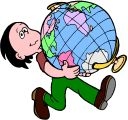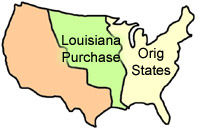
Worksheets and No Prep Teaching Resources
Reading Comprehension Worksheets
Geography

Geography
 Worksheets and No Prep Teaching Resources Reading Comprehension Worksheets Geography |
 Geography |
| edHelper's suggested reading level: | grades 4 to 6 | |
| Flesch-Kincaid grade level: | 5.23 |
|
History of the Midwest Region, Part 1
By Trista L. Pollard |

|
 1 Open plains, cattle, and pioneers are part of the Midwest Region's history. The first people to live in the area were Native Americans. Archeologists have found artifacts from people who lived more than 1,000 years ago.
1 Open plains, cattle, and pioneers are part of the Midwest Region's history. The first people to live in the area were Native Americans. Archeologists have found artifacts from people who lived more than 1,000 years ago. |
Create Weekly Reading Books
Prepare for an entire week at once! |
| Leave your feedback on History of the Midwest Region, Part 1 (use this link if you found an error in the story) |
 |
Geography
|